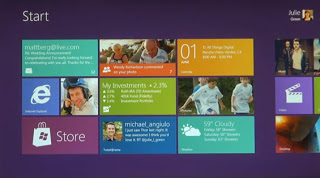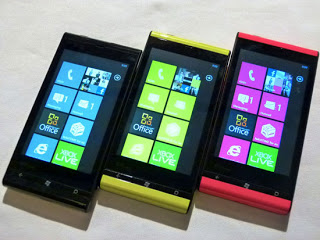With Windows 8, Microsoft may have its mojo back
Something funny happened to me down at Microsoft’s Build conference, held this week in Anaheim, Calif. Something rare. Something unusual.
I wanted what I saw on the keynote stage, and I wanted it bad.
I’m talking about the new look-and-feel of Windows 8. The Metro user interface. The seamless transition that it encourages between devices in many different form factors – desktops, servers, tablets and phones. The user experience looks fresh and compelling, and frankly is the most innovative update that I’ve seen to a Microsoft desktop operating system since Windows 95.
As mentioned above, it’s rare for me to have that type of reaction. I didn’t have it upon seeing the first iPhone, for example. In fact, Apple has only done that two me twice, with the MacBook Air and the iPad. (Both of which I purchased promptly when they appeared in stores.)
In fact, I can only think of a few other times I had that reaction. Upon seeing the launch of a particular version of Mathematica (I forget which version). At the launch of the Cobalt Cube, an innovative small-business server that Sun Microsystems acquired and killed. Steve Jobs demonstrating the second-generation NeXT pizza-box workstation. Not many others.
Downloading and installing the Windows Developer Preview, including tools, onto one of my lab machines is on my todo list. (Microsoft gave every paid attendee at Build a Samsung tablet with the Win8 beta and tools preinstalled, but those were not offered to press attendees like yours truly.)
What about the developer angle? Microsoft appears to be making it easy to retrofit existing Windows applications to behave nicely within the new Metro user experience; in fact, the company claims that every app that runs under Windows 7 will run under Windows 8. (Presumably, that’s for Intel x32/x64 apps and not for ARM applications.) The Metro experience is driven by JavaScript with HTML, but can also be implemented using C#, C++ or Visual Basic using XAML. No rocket science there.
Another big push with Windows 8 is to HTML5. While Silverlight and other plug-ins will still be supported, and there’s indeed a strong commitment to Silverlight, the message was clear: HTML5 is the future. That’s welcome news, of course – with Apple also on the HTML5 bandwagon, it’s the safest bet in town.
Finally, there’s the push to touchscreens. Microsoft is using the touchscreen to differentiate Windows from Mac OS X. Apple has been very clear that (at least under Steve Jobs) that touchscreens were for mobile devices, and not for iMacs. A plethora of computers built for Windows 8 – including desktops and notebooks – will have touchscreens. Let’s see where this goes: If consumers choose Windows because of this, expect Apple to embrace the touch as well.
As for now – I look forward to seeing how well the developer preview runs on a four-year-old Asus X50RL laptop. Should be interesting!
Z Trek Copyright (c) Alan Zeichick



” in fact, the company claims that every app that runs under Windows 7 will run under Windows 8. (Presumably, that’s for Intel x32/x64 apps and not for ARM applications.)”: Intel-based programs will not run on ARM-based Win8 machine without a recompile (i.e., there is no Intel emulator / VM).
“HTML5 is the future”: I was under the impression that WinRT (the WinMetro API), which has “projections” (i.e., bindings) for C++, C#, and the rest, was primarily about WPF/XAML, so I was under the impression that a C# programmer would most likely be writing their Metro interfaces using WPF/XAML. Not so?
Isn’t battery life an enormous question? It seems to me that the conquest of the “sofa experience” by Apple, with the iPad and MBA has a _lot_ to do with freedom from the power cord. That may be a _little_ less of an issue in corporations, but would you boot your MBA into Win8 if it had half of its Lion battery life? I’m not at all sure I would.
–LOB
Quick vocab note: ‘Plethora’ does not mean a large amount, as you’ve used it. It is strictly a pejorative term meaning an ‘excess of’ in ways that cause a problem. I agree, though, that the error is common.
I’m not sure if I like this whole Metro interface. I’m not even that old fashioned, but I think I vastly prefer the old Windows look. If I wanted to have a tablet interface, I would use a tablet. I feel like trying to fit a tablet interface onto PC hardware is pointless and limiting. I have yet to try it though.